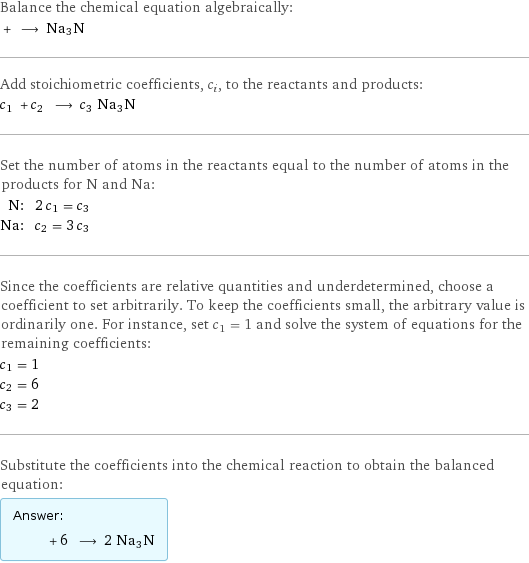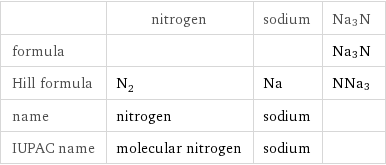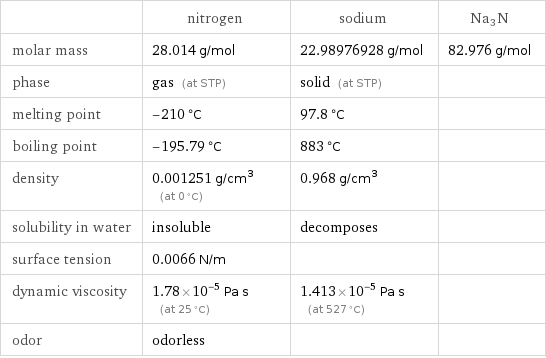Input interpretation

nitrogen + sodium ⟶ Na3N
Balanced equation

Balance the chemical equation algebraically: + ⟶ Na3N Add stoichiometric coefficients, c_i, to the reactants and products: c_1 + c_2 ⟶ c_3 Na3N Set the number of atoms in the reactants equal to the number of atoms in the products for N and Na: N: | 2 c_1 = c_3 Na: | c_2 = 3 c_3 Since the coefficients are relative quantities and underdetermined, choose a coefficient to set arbitrarily. To keep the coefficients small, the arbitrary value is ordinarily one. For instance, set c_1 = 1 and solve the system of equations for the remaining coefficients: c_1 = 1 c_2 = 6 c_3 = 2 Substitute the coefficients into the chemical reaction to obtain the balanced equation: Answer: | | + 6 ⟶ 2 Na3N
Structures

+ ⟶ Na3N
Names

nitrogen + sodium ⟶ Na3N
Chemical names and formulas

| nitrogen | sodium | Na3N formula | | | Na3N Hill formula | N_2 | Na | NNa3 name | nitrogen | sodium | IUPAC name | molecular nitrogen | sodium |
Substance properties

| nitrogen | sodium | Na3N molar mass | 28.014 g/mol | 22.98976928 g/mol | 82.976 g/mol phase | gas (at STP) | solid (at STP) | melting point | -210 °C | 97.8 °C | boiling point | -195.79 °C | 883 °C | density | 0.001251 g/cm^3 (at 0 °C) | 0.968 g/cm^3 | solubility in water | insoluble | decomposes | surface tension | 0.0066 N/m | | dynamic viscosity | 1.78×10^-5 Pa s (at 25 °C) | 1.413×10^-5 Pa s (at 527 °C) | odor | odorless | |
Units
